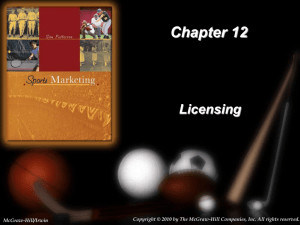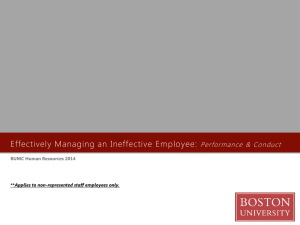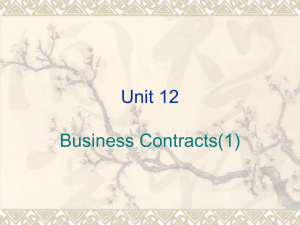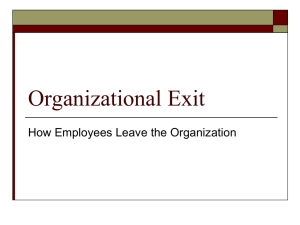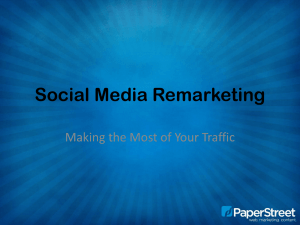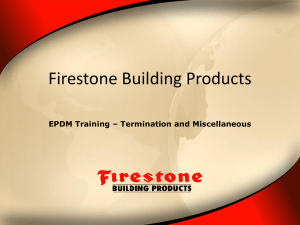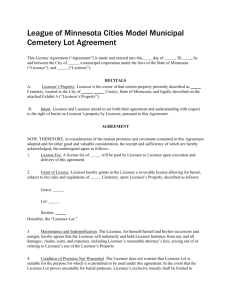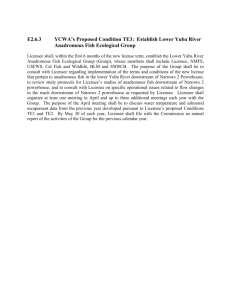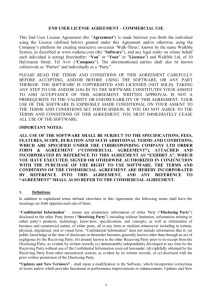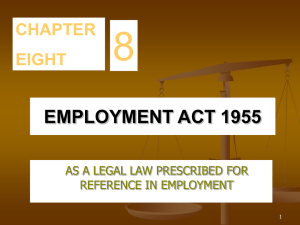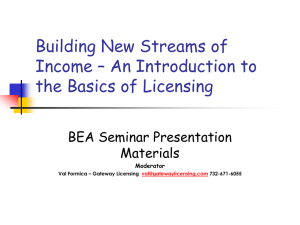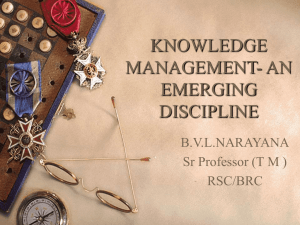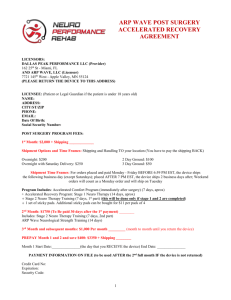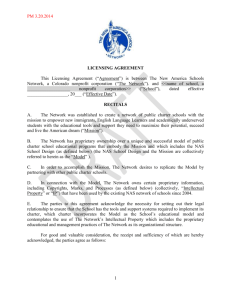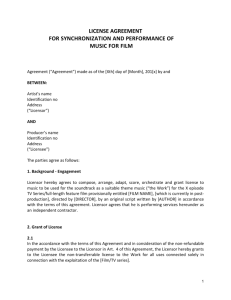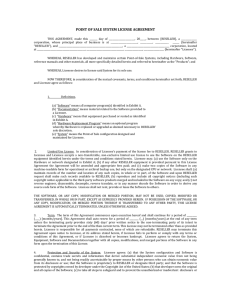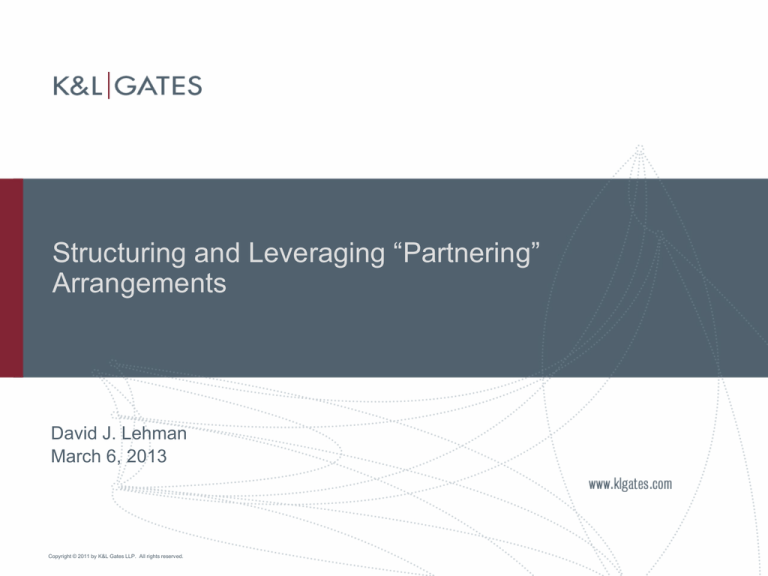
Structuring and Leveraging “Partnering”
Arrangements
David J. Lehman
March 6, 2013
Copyright © 2011 by K&L Gates LLP. All rights reserved.
Agenda
What are Strategic Relationships?
Why enter into Strategic Relationships?
General Framework and Common Issues
Closer look at certain Strategic Relationships
Questions and Answers (But Don’t Wait!)
Objective: Consider Strategic Relationships as
an alternative approach
1
Lots of Choices
Marketing
Agreement
Representation
Development
OEM
In-License
Out-License
VAR
Contract
Manufacturing
Distribution
2
Two Flavors of Strategic Relationships
Contractual Alliance
Separate Entity
Venturer II
Venturer I
Assets
Assets
Joint Venture
(Partnership/Joint Venture)
(Limited Liability Company)
(Corporation)
3
Two Flavors of Strategic Relationships
Other Terms
“Joint Venture”
“Partner”
“Strategic Alliance”
4
Two Flavors of Strategic Relationships
Strategic Contractual Alliances Benefits
Lower Investment Cost
Easier to commence relationship
Easier to exit
Shorter duration
5
Two Types of Strategic Relationships
Strategic Entity Alliance
Liability (marketing a new product)
Value in enterprise (e.g., BillingZone)
Deeper relationship
Other Considerations
Tax
Accounting (consolidation)
6
Why Engage in Strategic Relationships
Use assets of third parties
Marketing/reseller – Marketing Resources
Out-License – Various Resources
In-License –Technology
Joint Development
Technology
Capital
Resources (e.g., lab, people, expertise)
7
Recent Strategic Alliance Headlines Credibility
“Thorley Industries lands $215 M Hasbro deal,
hiring”
“Philips, Immunetrics Unite to Target Infectious
Disease”
“Biogen, Knopp Strike Deal to Develop
Treatment for Lou Gehrig’s Disease”
“InvestEdge Partners with SEI to Provide
Enhanced Regulatory Compliance Solutions for
Banks”
8
Potential Benefits of Strategic Relationships
Non-dilutive
Potentially faster/cheaper
Exploit third party assets – fewer mistakes
9
Cautions
Remember the little person on your shoulder
Consider the future of the business (e.g.,
reseller/branding) – Don’t mortgage the future
Consider
Time
Cost (somebody has to pay the lawyers)
Risk
10
Framework for a Strategic Relationship
Formation
Operations
Termination
11
Framework for a Strategic Relationship
Formation
What is each party contributing?
What is each party NOT contributing?
Exclusive vs. non-exclusive rights
12
Framework for a Strategic Relationship
Operation
Who is operating?
Who makes decisions? (Who decides who
decides?)
What if additional resources are necessary?
How are proceeds allocated?
Who gets paid for operating?
13
Framework for a Strategic Relationship
Termination
When is the Strategic Relationship terminated?
Who gets which assets upon termination (e.g.,
intellectual property; developments; customers;
trademark)?
Buy/Sell
14
Dispute Resolution – Common Issue
Avoid Disputes
Information Exchange
Align Interests/Identify different interests
Quality Partners
Consider escalation/mediation
Ask the “What if’s”
15
Dispute Resolution – Common Issue
Where does the fight occur?
Venue
Forum
Arbitration v. Court
1 arbitrator v. 3 arbitrators
Governing Law
Who pays for the fight?
What happens during the fight?
16
Dispute Resolution – Common Issue
Remedies
Termination (out-license)
Damages
Injunctive Relief (e.g., reseller)
17
Assignment – Common Issue
Third Party
Competitors
Successors
Bankruptcy
18
Sales Representative/Marketing Agreement
Contract
Sales Representative
Company
Product Sale
Customer
Overview – Note: Sales Rep never takes title
Benefits to Company
Leverage third party sales force/marketing team
Maintains goodwill/trademark of company
Benefits to Third Party
Use already existing sales force – add another
product
19
Sales Representative/Marketing Agreement
Special considerations
Sales effort
Exclusivity (territory and product)
Company
Sales Representative
Limit Representations
Not an agent (can’t bind Company)
Protect goodwill – Use of trademark/trade name
20
Sales Representative/Marketing Agreement
Consideration/Payment
Amount per sales
Costs and expenses
Termination
Notice
Company – short
Sales Rep – long
Cause – no cause
There may be laws
Avoid franchise characterization
21
Sales Representative/Marketing Agreement
Post-Termination
Post-termination commissions (“Tails”)
Post-termination rights/obligations (non-compete)
Customer list
Dispute
Termination is final – only remedy is damages
22
Remarketing Agreements
Company
Sale
Remarketer
Sale
Customer
Remarketing/Distribution
OEM (Original Equipment Manufacturers)
VAR (Value Added Reseller)
23
Remarketing Agreements
Lose/diminish value of goodwill
Trademark – use (mandatory and control)?
Changes to product/service
Control
Liability
Warranties
Payment
Verification
Reports
Incentive to pay (interest/penalty/pay for audit)
24
Remarketing Agreements
Special Considerations (continued)
Pricing of Products and Services
Potential of undercutting
Minimum pricing (pay attention to anti-trust
considerations)
Combination products
Inventory Control
Technology (see licenses)
25
Remarketing Agreements
Termination
Notice
Carry-over inventory
Reliance
Trademarks
Post-Termination obligations
26
Out-Licenses
Company
Technology
License
Licensee
Description (common with Drug Development)
Benefits
Use underutilized assets
Accelerate development and/or commercialization
27
Out-Licenses
Keys to Grant
Identify the technology with specificity
Territory
Field of Use
Exclusivity
Transferability
Term
28
Out-Licenses
Commitment of Licensee
Milestones/performance
Royalties
Amount
Royalty-Base
Minimums
Joint Products
29
Out-Licenses
Improvements/Developments
Licensee Improvements
Licensor Improvements
Rights to use
Licensor
Licensee
Obligation to pay royalties on Developments
Licensee
Licensor
30
Out-Licenses
Term of royalty obligation
Consider survival beyond life of patents
Intellectual property prosecution and
infringement
Who prosecutes? Who pays?
Protect the base intellectual property
Who can sue? Who benefits?
31
In-Licenses
Owner/Licensor
Technology
License
Company
Similar Issues
Reasons
Critical asset
Develop more than 1 product
Remember the “Shoulder Person”
Pay attention to Termination
Improvements are key
32
Joint Development
Formation
Critical as to what is being contributed (and what
is not)
Intellectual property
Cash
Technology
Lab/people
Background technology v. new technology
License v. transfer
33
Joint Development
Operation
Decision-making – Typically a “Steering
Committee”
What is being developed?
Who is on the steering committee?
How are decisions made?
34
Joint Development
Ownership/Use of Development
Identify improvements/development/How do you know?
Use/commercialization
Royalties
Intellectual Property Prosecution
Intellectual Property Enforcement
35
Joint Development
Joint Ownership of Patents
1 +1 < 2
Each owner can exploit patent
Each owner can grant non-exclusive licenses
No right to grant exclusive licenses
No obligation to “Pay Over”
Need other owner to enforce patent
36
Joint Development
Alternatives to Joint Ownership
Vest technology in one party, with a license
Allocate by field of interest/use
Place technology in an entity
Express agreements
Royalty-Base
What is the base?
How are derivatives handled?
Reporting, etc.
37
Conclusion
Consider and Exploit Strategic Arrangements
38

